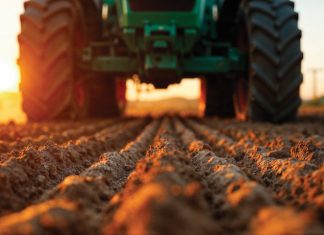The Food and Agriculture Organisation of the United Nations (FAO) warned in its latest report, published on 26 April 2023, that the climate phenomenon known as El Niño is expected to return in 2023. This follows a triple La Niña phenomenon where the world experienced a third consecutive La Niña event in 2022 and early 2023, a rare occurrence that has happened only twice since 1950, the report stated.
A possible return of El Niño in the second half of 2023 could lead to dry weather conditions in key cropping areas of Central America, Southern Africa and Far East Asia, while excessive rainfall and possible flooding are foreseen in Near East Asia and East Africa.
According to the FAO, the return of El Niño in 2023 could have serious consequences for countries that depend on agriculture, especially in regions of the world that are already struggling with hunger and poverty. With extreme weather affecting food production, there could be further disruptions to food supplies and significant price increases. ‘Already in 2022, the number of people facing acute food insecurity was projected to reach up to 222 million in 53 countries/territories, the highest level on record according to the latest Hunger Hotspots report,’ the FAO report stated.
One of the areas most likely to be affected is Africa, where many countries are already facing food insecurity due to conflict, climate change, and other challenges. El Niño could exacerbate this situation, leading to a further deterioration of food security and an increased risk of famine.
The FAO is urging governments, aid agencies, and the private sector to prepare for the return of El Niño and to take steps to mitigate the potential impact on food supplies. This includes investing in drought-resistant crops, improving water management systems, and strengthening early warning systems for extreme weather events.
It is not yet clear how severe the next El Niño will be or which areas of the world will be most affected. However, the FAO believes that it is crucial to take action now to ensure that vulnerable communities are prepared for the potential impact on their food supplies. (See full report in link below for recommended anticipatory actions for governments most affected.)
What is a La Niña and El Niño event and how does it affect agriculture?
La Niña events are commonly associated with wetter conditions in Australia and drier conditions in the United States of America (USA), South America and East Africa.
During the recent triple La Niña event, widespread flooding occurred in Australia where, according to the report, bumper wheat crops were recorded in 2021 and 2022, while drought conditions curbed wheat and maize yields in the USA as well as in Near East Asian countries.
According to the FAO report, the effects on grain production in East Africa were particularly devastating, with several countries experiencing multiple seasons of failed crops that triggered famine alerts in Somalia in the first half of 2022. The 2023 La Niña event officially dissipated in March 2023.
El Niño is caused by a warming of the Pacific Ocean and can have a major impact on the climate in different regions of the world. The phenomenon has been linked to droughts, floods, and extreme weather conditions, which can lead to crop losses, food shortages, and price increases.
Rainfall patterns during El Niño events tend to be the reverse of La Niña. For example, in East Africa and Near East Asian countries there is a tendency for wetter conditions. Conversely, drier conditions are generally observed in West Africa, Southern Africa, India, South East Asia, Australia, the northern areas of South America and Central America.
Read the full report here



















